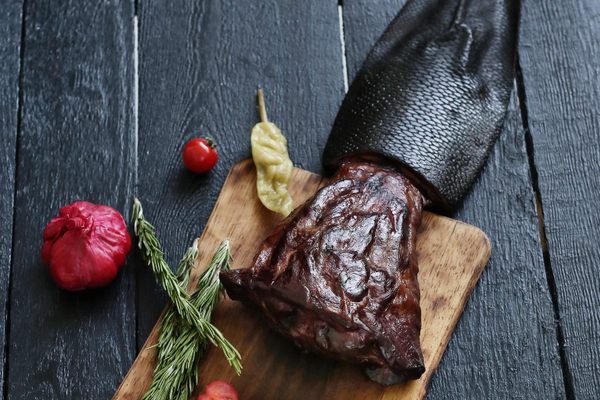Meats & Animal Products
Capybara
During Lent in Venezuela, the world's largest rodent becomes a “fish.”
Sometime between the 16th and 18th centuries (accounts vary), Venezuelan clergymen wrote to the Vatican with a special request. They had discovered an animal that lived in water, had webbed feet, and tasted like fish. With Lent approaching, they asked the Vatican to grant the animal the status of fish, so they might eat it during the upcoming days of meat-free fasting. By letter, the Catholic Church agreed, and the capybara—the largest living rodent in the world—became a coveted addition to many Lenten dinner tables.
Since then, Venezuelans have developed a taste for the giant aquatic rodent. The demand became so extraordinary that illegal poaching once threatened to wipe out the population. With the help of government regulation and speedy reproduction, however, capybaras are no longer endangered.
The flavor, diners say, leans more toward fish than meat, because capybaras survive mostly on aquatic grasses. But the resemblance to red meat is undeniable. Many first-time tasters say it tastes like salty pork, but it’s difficult to know how the unadulterated meat tastes, as capybara is almost always dried, salted, and shredded. The prepared “fish” goes into everything from soup to casseroles to empanadas.
Written By
 cecilyannwong
cecilyannwong
Sources
- www.nytimes.com/2007/03/21/world/americas/21rodent.html
- news.bbc.co.uk/2/hi/americas/7987587.stm
- www.nysun.com/foreign/in-days-before-easter-venezuelans-tuck-into/11063/
- books.google.com/books?id=RXgiGsCXdVUC&pg=PA302&dq=vatican+venezuela+capybara&hl=en&sa=X&ved=0ahUKEwji-c3qnuXaAhWEjlkKHXuEC7wQ6AEIJzAA#v=onepage&q=vatican%20venezuela%20capybara&f=false














